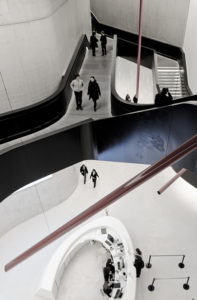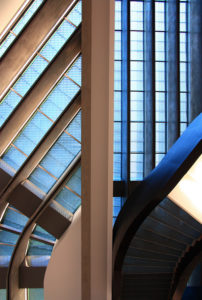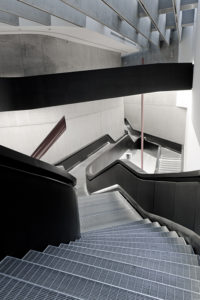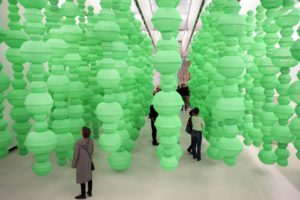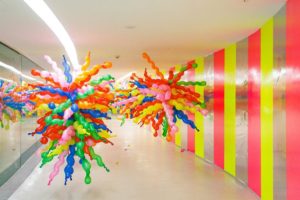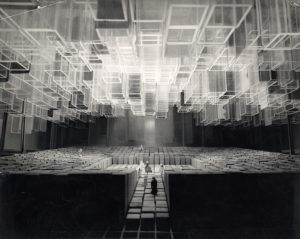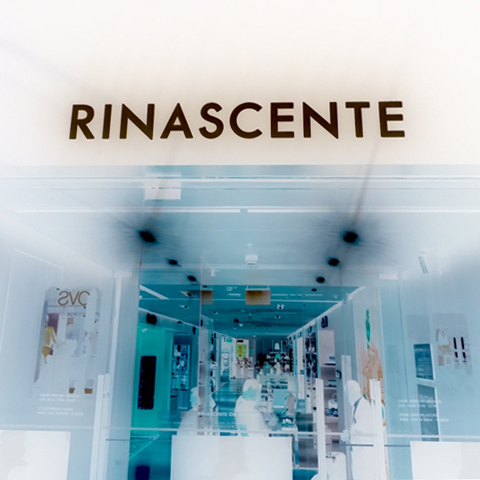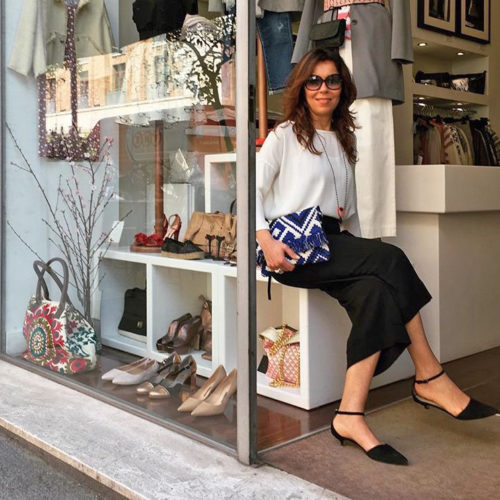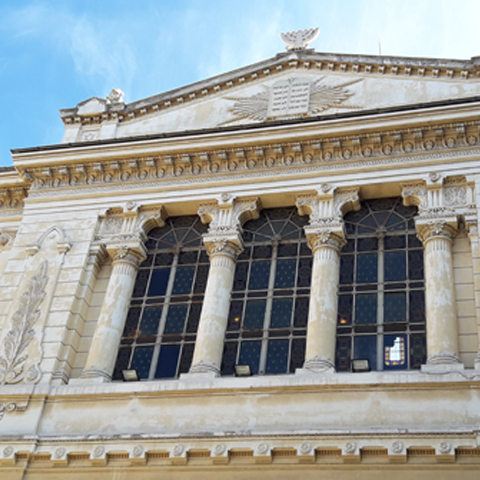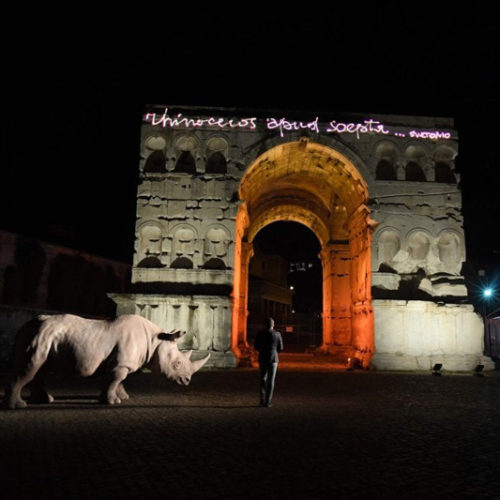Located on the site of a former military barracks, the grey concrete structure of the MAXXI
museum is a stark contrast to its residential surroundings. It’s situated in the Flaminio district of Rome, just north of Piazza del Popolo, where the majority of the neighborhood’s buildings are multi-story palazzos with muted beige, orange and brown exteriors. Instead, the MAXXI building is 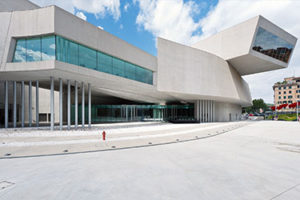 made up of long concrete segments, which appear to rest gently upon each other, intersecting every so often. With both sharp angles and sweeping curves, the giant structure stands firm in the neighborhood, proud of its unorthodoxy and confident of its place as a landmark of modern Rome.
made up of long concrete segments, which appear to rest gently upon each other, intersecting every so often. With both sharp angles and sweeping curves, the giant structure stands firm in the neighborhood, proud of its unorthodoxy and confident of its place as a landmark of modern Rome.
The museum opened in 2010 and was designed by Anglo-Iraqi architect Zaha Hadid who died in March this year. Known for prominent designs such as the London Olympic Aquatic Centre and the Guangzhou Opera House, Hadid was the first woman to win the Pritzker Prize for architecture. Her radical work has as many fans as it does critics, but she is widely credited as defining a new approach to architecture, one with “multiple perspective points and fragmented geometry to evoke the chaos of modern life.”
With disorder and non-conformity easily found, Rome is a city that’s certainly familiar with the chaos of modern life. Look a little closer at the design of the MAXXI and you’ll also see more mirrors of Rome. At the entrance, slender columns make partitions between the outside courtyard and the long row of glass doors inviting you inside. Here the finish is polished and futuristic but hop over to the historical center and you’ll see a similar idea with Bernini’s columns at St Peter’s.
The material chosen for this modern art gallery, concrete, is a substance that the ancient Romans were experts at using. Roman concrete is unusually strong, durable, and long lasting due to the properties of the specific volcanic ash, pozzolana, found in the soil of Lazio. The world’s largest unreinforced concrete dome at the Pantheon still stands today, almost 2000 years after it was built.
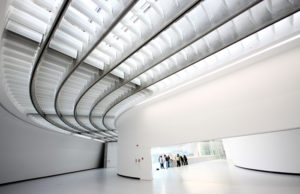 In the lobby of the MAXXI, I’m always struck by the sheer amount of free space available. The entrance is open-plan; undivided and un-partitioned, the full height ceilings remind you that this isn’t the usual museum space. Contrasting against the white backdrop, thick black stairways and walkways lead visitors to the exhibition spaces. With their metal grid flooring, lit with bright white light from below, these passageways could seem cold and uninviting. Instead their soft, fluid shapes create paths that gently transport visitors through this modern space.
In the lobby of the MAXXI, I’m always struck by the sheer amount of free space available. The entrance is open-plan; undivided and un-partitioned, the full height ceilings remind you that this isn’t the usual museum space. Contrasting against the white backdrop, thick black stairways and walkways lead visitors to the exhibition spaces. With their metal grid flooring, lit with bright white light from below, these passageways could seem cold and uninviting. Instead their soft, fluid shapes create paths that gently transport visitors through this modern space.
Indeed, Hadid’s first inspiration for the design was a delta: a river dividing into smaller streams before flowing into the sea. In the case of the MAXXI the mainstreams of the building are the galleries and the minor streams are bridges and walkways smoothly connecting the spaces.
“The MAXXI should not be considered just one building – but several. The idea was to move away from the idea of ‘the museum as an object’ and towards the idea of a ‘field of buildings’. It’s no longer just a museum, but an urban cultural centre where a dense texture of interior and exterior spaces have been intertwined and superimposed over one another.” – Zaha Hadid.
As a center for contemporary arts and architecture, the MAXXI has hosted numerous exhibitions and events. I was there last month just in time to catch the Transformers exhibition. A bright and colorful experience, the idea was to use art and design to highlight social causes and stimulate discussion. I found the clean backdrop of the museum the ideal place to host such a vibrant display of artworks.
- Transformer Exhibition
- Life Life Exhibition
For example, Life Life; a walkway of suspended balloons that visitors could pass through; would not have been the same if not situated in the platform area of the MAXXI. The corridor space was compact enough to increase your interactivity with the balloons, but with one glass wall that meant you always kept an eye towards the outside world.
After Transformers the MAXXI will host Superstudio 50, a project celebrating the founding of the Superstudio architectural firm in Florence. This was the company that, in 1969, proposed Il Monumento Continuo, the Continuous Monument. Designed in response to the bland architecture of the 60s, it was a gridded structure that would, in theory, wrap around and cover the planet. So expect big things from 21 April, when the exhibition opens.
In the meantime, if you want to experience the MAXXI’s bright, translucent and flowing spaces, their permanent collection is free from Tuesday to Friday. At that price, there’s really no reason not to check out this contemporary construction and find out how Rome is venturing into the future.
Oh, and if you’re a sucker for them, like I am, there’s also an excellent gift shop.
MAXXI
Via Guido Reni, 4/A
tel. +39 06 3201954
www.fondazionemaxxi.it


